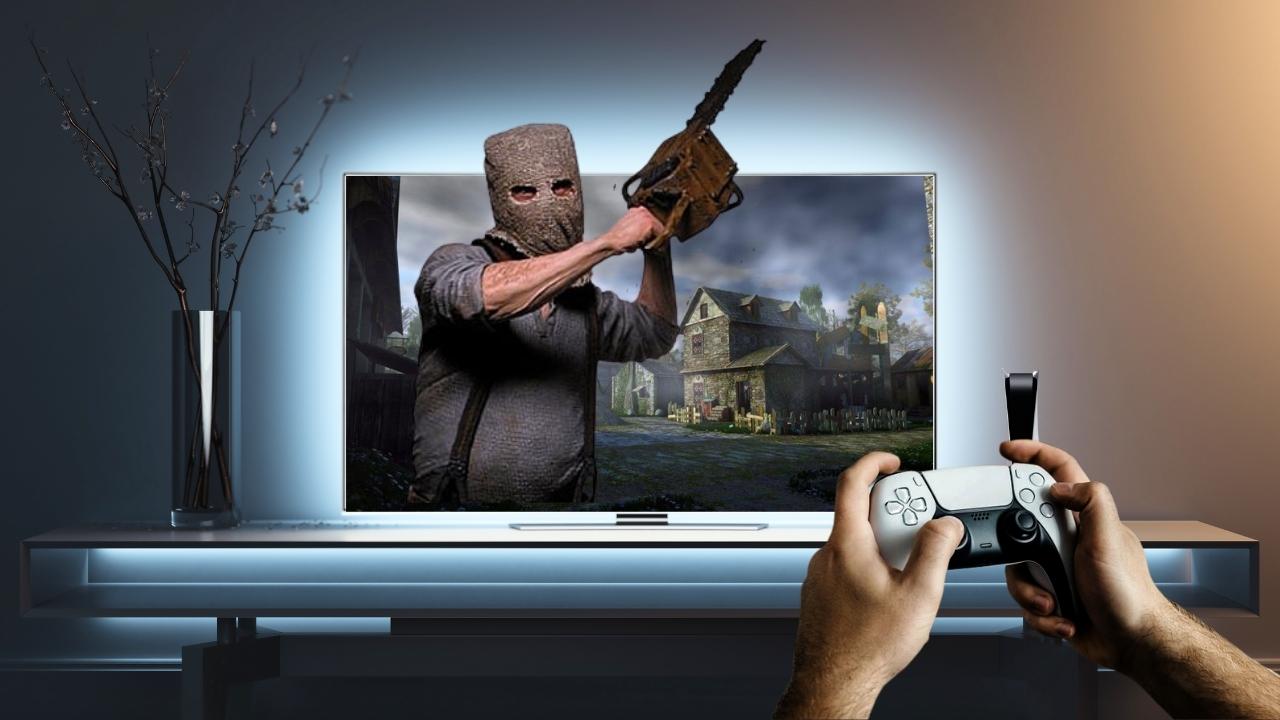These are the three must-have features I want from my next TV
Here's why you should keep them in mind too

Buying a new TV is a costly investment, which is why most of us will want our TVs to last for a good number of years without needing to be replaced or upgraded.
We also invest time and money building our living rooms around them, which is why it’s so important to understand what you will need from your new TV. But with factors like panel type, screen size and more to consider, choosing the best TV for your needs can be a challenge.
With my own TV due for an upgrade, here are three must-have features I’m looking for from my new screen – and they're factors than anyone who's looking for a new TV should consider.
1. A panel fit for my living room
When buying a new TV, panel type is one of the key choices you’ll need to make, with OLED, QLED, Mini-LED and more all vying for your hard-earned cash.
It’s often assumed that one for the best OLED TVs will be the best TVs money can buy, as the picture quality they offer is generally considered superior to that of all other panel types. However, this doesn’t necessarily guarantee that they will automatically be the best fit for your living room.
If you’re like me and use your home screen in a room that is bright during the day and well-lit even at night, a TV with a QLED or Mini-LED panel might actually be the better choice.
This is due to the superior brightness levels these panel types have to offer. By implementing LED backlights with precise control, QLED and Mini-LED panels are typically capable of very high levels of brightness without the risk of burn-in. And, thanks to that increased brightness, they’re also less likely to experience glare.
Get daily insight, inspiration and deals in your inbox
Sign up for breaking news, reviews, opinion, top tech deals, and more.
But there is a cost for this brightness, as the greater number of backlights for these panels will also mean that they consume more power. This can make a difference to your monthly energy bill, especially when compared to the less power hungry OLED TVs.
OLED by its very nature forgoes traditional LED backlights in favor of self-lighting pixels. While the technology is undoubtedly impressive, brightness levels are usually kept lower to avoid burn-in of its organic materials. Luckily, manufacturers have begun to develop OLED screens with this brightness issue in mind.
As an example, the inclusion of a new ‘brightness booster’ technology helped 2022’s LG C2 achieve improved brightness levels compared to the previous year’s LG C1 – up from 750 nits to 800 nits peak brightness. And all signs point to even further improvements with LG’s 2023 lineup, as welcome news for those of us looking to buy TVs for brighter living rooms.
2. Gaming support
The latest generation of PlayStation and Xbox consoles are powerful devices which perform at their best with a TV that's capable of keeping up with them. Fortunately, many newer TVs are built to include features with these consoles in mind, such as support for variable refresh rates (VRR) and auto-low latency mode (ALLM).
But in order to get the most from your PS5 or Xbox Series X, no feature is more important than HDMI 2.1.
HDMI is the connection responsible for transmitting information from your console to your TV, with HDMI 2.1 being the latest HDMI standard. This allows for higher resolutions with greater frame rates, thanks to its higher maximum bandwidth (48Gbps) compared to the older HDMI 2.0 (18Gbps) standard.
In order to support 4K at 60-120 frames per second (FPS), the PS5 runs at a standard output of 32Gbps, while the Xbox Series X operates at an HDMI bandwidth of 40Gbps. This means that both the PS5 and Xbox Series X were designed with HDMI 2.1 in mind.
It’s worth noting that some TV manufacturers will advertise support for HDMI 2.1 features such as VRR, but still only offer HDMI 2.0 ports. So for the best possible console experience, it’s important to ensure your new TV has proper HDMI 2.1 compliant ports.
3. Affordability
With our budgets getting tighter, the ideal TV for many of us will tick all the right boxes from a feature and specs perspective while still being affordable. This might seem like a tall order at first, but it’s not impossible.
Recent TVs such as the TCL 8-series have emerged to offer impressive specs at prices that are more affordable for those of us tighter budgets. Even the most powerful OLED TVs have landed serious discounts in the last six months in several markets to make their prices more appealing, including the LG C2 and Samsung S95B.
Whether it’s taking the time to know what you need or waiting for sales events like Black Friday to find the best option at a price you can afford, patience is essential to finding the right TV for you.

James is a senior journalist with the TechRadar Australia team, covering news, analysis and reviews in the worlds of tech and the web with a particular focus on smartphones, TVs and home entertainment, AR/VR, gaming and digital behaviour trends. He has worked for over six years in broadcast, digital and print journalism in Australia and also spent time as a nationally recognised academic specialising in social and digital behaviour trends. In his spare time, he can typically be found bouncing between one of a number of gaming platforms or watching anything horror.